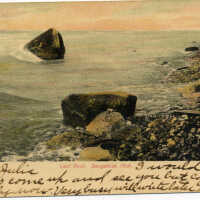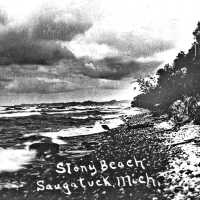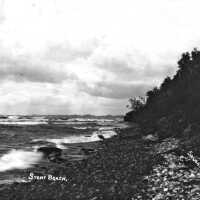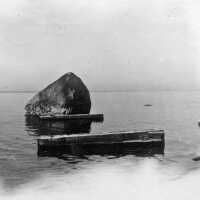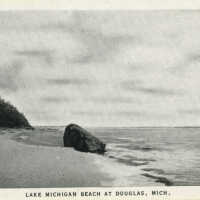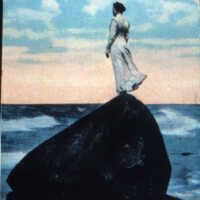Lost Rock
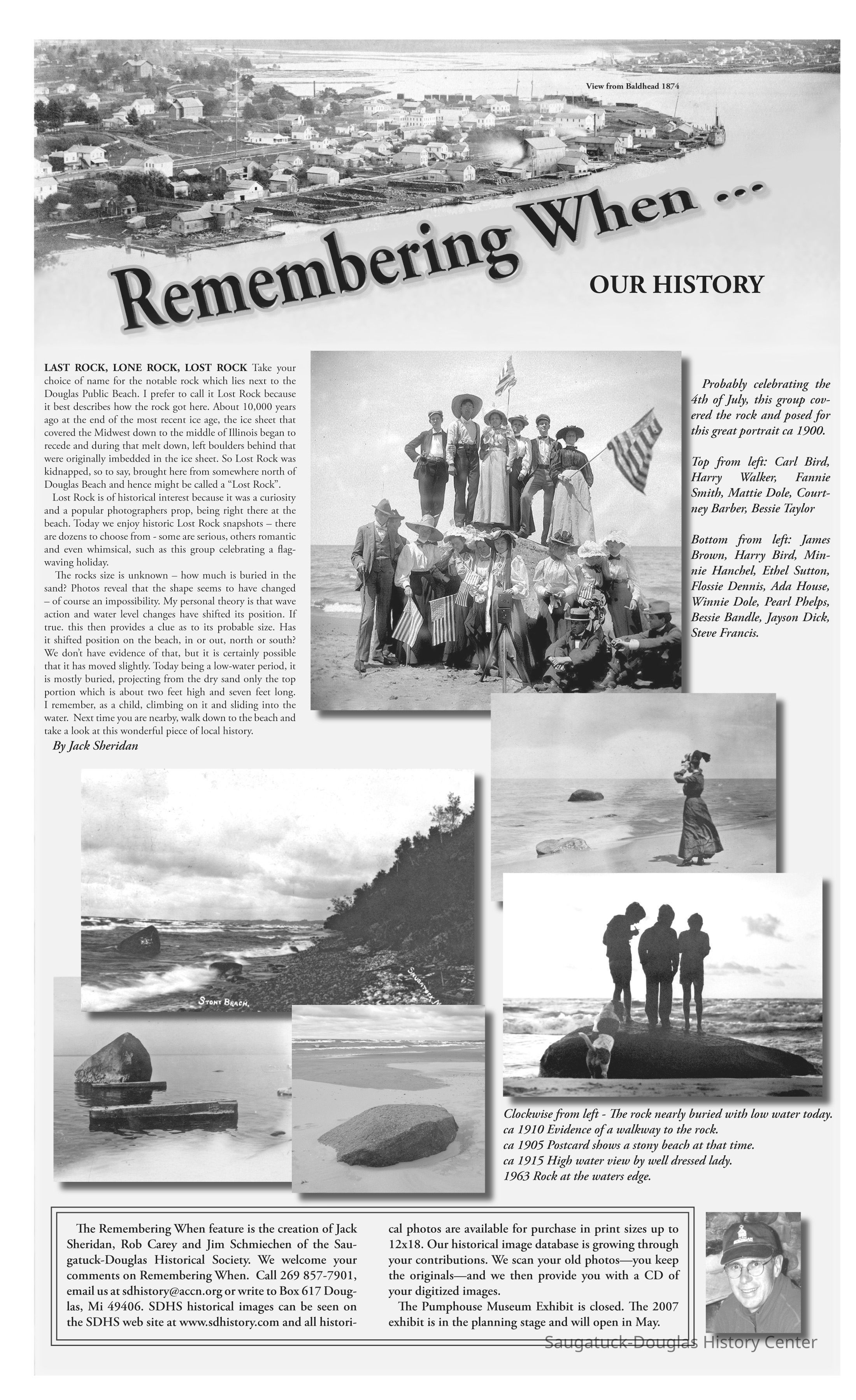
2021.87.100
LAST ROCK, LONE ROCK, LOST ROCK Take your choice of name for the notable rock which lies next to the Douglas Public Beach. I prefer to call it Lost Rock because it best describes how the rock got here. About 10,000 years ago at the end of the most recent ice age, the ice sheet that covered the Midwest down to the middle of Illinois began to recede and during that melt down, left boulders behind that were originally embedded in the ice sheet. So Lost Rock was kidnapped, so to say, brought here from somewhere north of Douglas Beach and hence might be called a “Lost Rock”. Lost Rock is of historical interest because it was a curiosity and a popular photographers prop, being right there at the beach. Today we enjoy historic Lost Rock snapshots – there are dozens to choose from - some are serious, others romantic and even whimsical, such as this group celebrating a flag-waving holiday. The rocks size is unknown – how much is buried in the sand? Photos reveal that the shape seems to have changed – of course an impossibility. My personal theory is that wave action and water level changes have shifted its position. If true. this then provides a clue as to its probable size. Has it shifted position on the beach, in or out, north or south? We don’t have evidence of that, but it is certainly possible that it has moved slightly. Today being a low-water period, it is mostly buried, projecting from the dry sand only the top portion which is about two feet high and seven feet long. I remember, as a child, climbing on it and sliding into the water. Next time you are nearby, walk down to the beach and take a look at this wonderful piece of local history. By Jack Sheridan
Remembering When1900 Lakeshore community
Winthers, Sally
2021.87
Sheridan, John "Jack" O. 1938-
Donation
Digital data in CatalogIt
Sheridan, John "Jack" O. 1938-Schmiechen, James A.Carey, Rob 1928-2019Douglas Union School 1866-
Local Observer
01/07/2022
11/18/2023



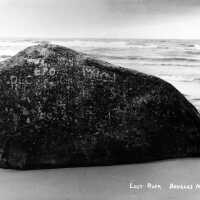
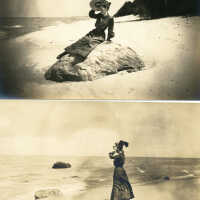
![The rock nearly buried with low water today. [2006]; Lost Rock 12-2006](https://d3f1jyudfg58oi.cloudfront.net/4124/image/8a783790-6fb9-11ec-806b-4335bc3cbab7-tUQSR1H.tn.jpg)

